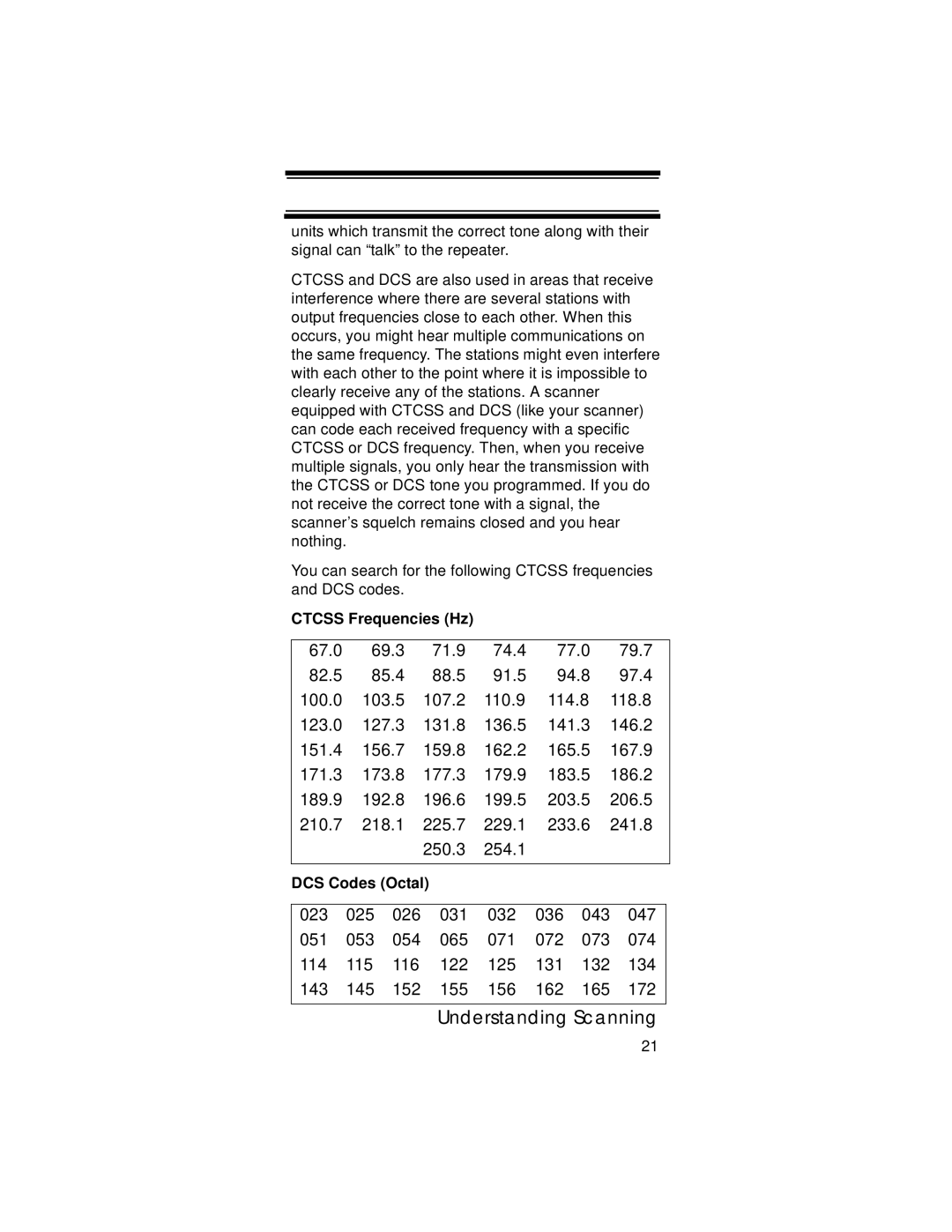
units which transmit the correct tone along with their signal can “talk” to the repeater.
CTCSS and DCS are also used in areas that receive interference where there are several stations with output frequencies close to each other. When this occurs, you might hear multiple communications on the same frequency. The stations might even interfere with each other to the point where it is impossible to clearly receive any of the stations. A scanner equipped with CTCSS and DCS (like your scanner) can code each received frequency with a specific CTCSS or DCS frequency. Then, when you receive multiple signals, you only hear the transmission with the CTCSS or DCS tone you programmed. If you do not receive the correct tone with a signal, the scanner’s squelch remains closed and you hear nothing.
You can search for the following CTCSS frequencies and DCS codes.
CTCSS Frequencies (Hz)
67.0 | 69.3 | 71.9 | 74.4 | 77.0 | 79.7 |
82.5 | 85.4 | 88.5 | 91.5 | 94.8 | 97.4 |
100.0103.5 107.2 110.9 114.8 118.8
123.0127.3 131.8 136.5 141.3 146.2
151.4156.7 159.8 162.2 165.5 167.9
171.3173.8 177.3 179.9 183.5 186.2
189.9192.8 196.6 199.5 203.5 206.5
210.7218.1 225.7 229.1 233.6 241.8
250.3254.1
DCS Codes (Octal)
023 | 025 | 026 | 031 | 032 | 036 | 043 | 047 |
051 | 053 | 054 | 065 | 071 | 072 | 073 | 074 |
114 | 115 | 116 | 122 | 125 | 131 | 132 | 134 |
143 | 145 | 152 | 155 | 156 | 162 | 165 | 172 |
|
|
|
|
|
|
|
|
Understanding Scanning
21
